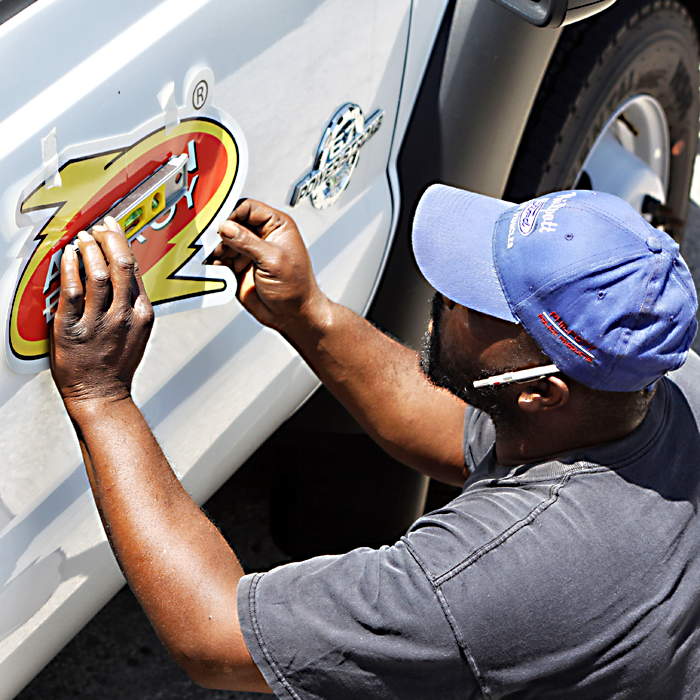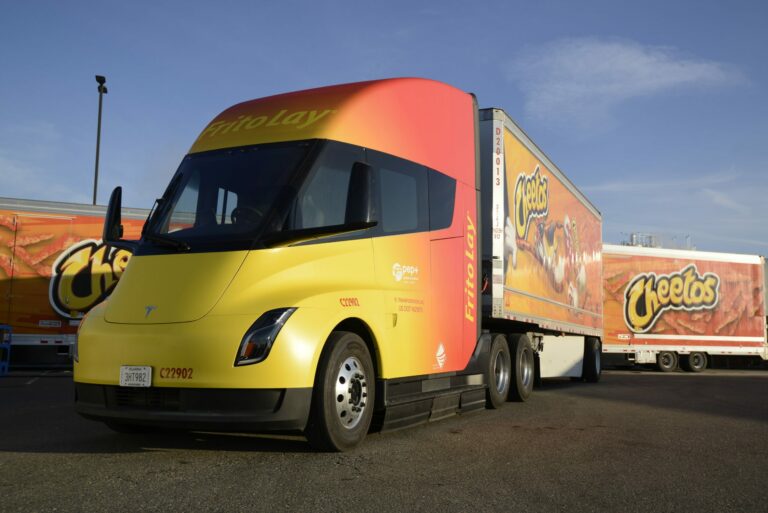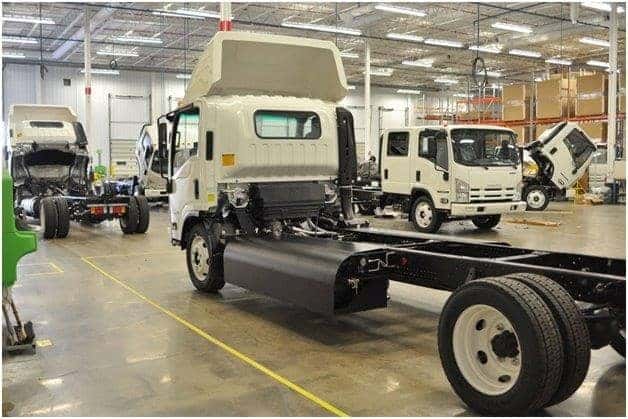Leased Trucks For Sale: Unlocking Value in the Commercial Vehicle Market
Leased Trucks For Sale: Unlocking Value in the Commercial Vehicle Market cars.truckstrend.com
In the dynamic world of commercial transportation, the acquisition of reliable vehicles is paramount to success. While new trucks offer the latest technology and pristine condition, their significant upfront cost and rapid depreciation can be daunting for businesses of all sizes. On the other end of the spectrum, traditional used trucks often come with unknown histories and potential hidden issues. This is where "leased trucks for sale" emerge as a compelling middle ground, offering a unique blend of value, transparency, and reliability.
A "leased truck for sale" refers to a commercial vehicle that has reached the end of its lease term with a company or individual and is now being offered for purchase in the secondary market. These vehicles, typically managed and maintained by reputable leasing companies or large fleets, represent a significant opportunity for buyers seeking cost-effective solutions without compromising on quality or performance. This comprehensive guide will delve into every facet of purchasing a leased truck, from understanding their origins to navigating the buying process and maximizing your investment.
Leased Trucks For Sale: Unlocking Value in the Commercial Vehicle Market
What Exactly Are Leased Trucks For Sale?
To fully appreciate the appeal of leased trucks for sale, it’s essential to understand their lifecycle. Businesses often opt for commercial vehicle leases rather than outright purchases for various reasons: conserving capital, predictable monthly expenses, tax benefits, and the ability to frequently upgrade to newer models. Lease agreements typically range from three to five years, during which the leasing company often mandates strict maintenance schedules and usage guidelines to protect their asset.
Once a lease concludes, the truck is returned to the leasing company or the original owner (if it was a lease-to-own arrangement). These vehicles, having served their initial purpose, are then thoroughly inspected, reconditioned (if necessary), and put up for sale. Unlike many used trucks sold by private parties or general dealerships, leased trucks often come from fleets that adhere to rigorous preventive maintenance programs, meaning their service histories are typically well-documented and comprehensive. This structured background is a primary differentiator and a significant advantage for potential buyers.
The Allure of Pre-Owned Leased Trucks: Why Buy?
The decision to purchase a leased truck over a new or traditional used vehicle is driven by several compelling advantages:
- Significant Cost Savings: The most immediate benefit is the price. New commercial trucks experience substantial depreciation, particularly in their first few years. Leased trucks, having already absorbed the brunt of this depreciation, are available at a significantly lower purchase price than comparable new models. This allows businesses to acquire high-quality assets without a crippling capital outlay.
- Known Maintenance History: This is perhaps the greatest differentiator. Leasing companies and large fleets operate on efficiency and uptime. They enforce strict maintenance schedules, utilizing authorized service centers and genuine parts. This means detailed service records – oil changes, tire rotations, brake inspections, major repairs – are often available, providing buyers with invaluable insight into the vehicle’s past care and potential future needs.
- Quality and Reliability: Trucks coming off lease from well-managed fleets are generally well-maintained and in good operational condition. They’ve been part of a professional operation, not subject to haphazard care. While they will show signs of use, their core mechanical integrity is often robust due to adherence to manufacturer-recommended service intervals.
- Variety of Options: The sheer volume of trucks coming off lease provides a wide selection of makes, models, configurations (e.g., sleeper cabs, day cabs, various bed types), and specifications to choose from. This increases the likelihood of finding a truck that perfectly matches your specific operational requirements and budget.
- Immediate Availability: Unlike ordering a new truck, which can involve long lead times for manufacturing and customization, leased trucks are typically available for immediate purchase and deployment, allowing businesses to respond quickly to market demands.
- Lower Insurance Premiums: Due to their lower market value compared to new trucks, insurance premiums for leased trucks are often more affordable, further contributing to overall operational cost savings.


Navigating the Purchase Process: A Step-by-Step Guide
Acquiring a leased truck involves a structured approach to ensure you make an informed and beneficial purchase.
- Define Your Needs: Before looking, clearly outline what you require. What type of truck (heavy-duty, medium-duty, light-duty)? What capacity? What specific features (refrigeration, liftgate, PTO)? What is your maximum budget, including potential financing, taxes, and registration?
- Research and Locate:

- Leasing Companies: Major leasing firms (e.g., Ryder, Penske, Idealease, Daimler Truck Financial) have dedicated sales divisions for their off-lease inventory. These are often the best sources for detailed maintenance records.
- Commercial Truck Dealerships: Many dealerships specialize in used commercial vehicles and often acquire off-lease trucks through various channels.
- Online Marketplaces: Websites like TruckPaper.com, CommercialTruckTrader.com, and IronPlanet.com (for auctions) list a vast array of used trucks, including those coming off lease.
- Auctions: Public and dealer-only auctions can offer competitive pricing, but require a higher level of buyer expertise and due diligence as "as-is" sales are common.
- Inspect Thoroughly: This is the most critical step.
- Initial Visual Inspection: Check for obvious damage, tire wear, fluid leaks, and overall cleanliness.
- Mechanical Inspection: If possible, have an independent, certified mechanic perform a pre-purchase inspection (PPI). This will uncover potential issues that aren’t immediately visible.
- Test Drive: Drive the truck under various conditions – empty and, if possible, with a load. Listen for unusual noises, check braking, steering, and transmission shifts.
- Review Documentation: Scrutinize the vehicle history report (e.g., CARFAX, Experian AutoCheck) and, most importantly, the maintenance records provided by the seller. Look for consistency, completeness, and any recurring issues.
- Understand the Documentation: Ensure you receive a clear title, any lien releases (if applicable), and all necessary paperwork for registration. Clarify any remaining factory warranty or inquire about extended warranty options.
- Negotiate and Finance: Be prepared to negotiate the price based on your research and inspection findings. Explore financing options through your bank, credit union, or the seller’s preferred lenders. Interest rates and terms for used commercial vehicles can vary.
Key Considerations Before You Buy
While leased trucks offer significant advantages, a savvy buyer will consider these factors:
- Vehicle History Report (VHR): A VHR is a good starting point, but it won’t capture all maintenance details. It primarily flags accidents, title issues, and odometer discrepancies.
- Maintenance Records: These are paramount. A complete, detailed record from the leasing company is gold. It verifies the truck received regular service and addresses any specific issues.
- Mileage vs. Age: A lower mileage truck might seem appealing, but if it’s older, it could have spent more time idle or in stop-and-go traffic. Conversely, a higher mileage truck might have predominantly highway miles, which can be less taxing on certain components. Evaluate both in conjunction with maintenance history.
- Warranty Options: Some off-lease trucks might still have a portion of their original factory warranty remaining. Additionally, many sellers or third parties offer extended or aftermarket warranties. Weigh the cost against the potential peace of mind.
- Compliance and Regulations: Ensure the truck meets all federal, state, and local regulations for your intended use (e.g., DOT inspections, emissions standards).
- Resale Value: Consider the long-term. A well-maintained, popular model will likely retain better resale value if you decide to upgrade in the future.
Types of Leased Trucks You Might Find
The market for leased trucks for sale is diverse, reflecting the broad range of commercial applications:
- Light-Duty Trucks: This category includes heavy-duty pickups (Ford F-250/350/450, Ram 2500/3500, Chevy Silverado 2500/3500) and commercial vans (Sprinter, Transit, ProMaster). Often used for smaller deliveries, construction trades, or service calls.
- Medium-Duty Trucks: Box trucks, stake bed trucks, flatbeds, and smaller dump trucks fall into this class (e.g., Hino, Isuzu, Freightliner M2, Ford F-650/750). Ideal for local and regional deliveries, landscaping, and utility work.
- Heavy-Duty Trucks: This is where you find the workhorses of the industry: tractor units (day cabs and sleepers from Freightliner, Peterbilt, Kenworth, Volvo, International), large dump trucks, cement mixers, and specialized vocational trucks. These are typically used for long-haul freight, heavy construction, and specialized industrial tasks.
- Industry-Specific Vehicles: Refrigerated trucks (reefers), garbage trucks, car carriers, and specialized utility vehicles are also frequently available as off-lease units, offering niche solutions.
Common Challenges and How to Overcome Them
While beneficial, buying a leased truck isn’t without its potential hurdles:
- High Mileage: Many leased trucks, especially heavy-duty ones, accumulate significant mileage.
- Solution: Focus on maintenance records. A truck with high mileage but a pristine service history can be a better buy than a low-mileage truck with neglected maintenance. A thorough pre-purchase inspection is vital.
- Wear and Tear: Commercial use inevitably leads to cosmetic and minor mechanical wear.
- Solution: Factor in reconditioning costs (detailing, minor bodywork, interior repairs) into your budget. Again, a PPI helps identify underlying mechanical issues vs. superficial wear.
- Limited Customization: Off-lease trucks come as-is, meaning you might not find the exact configuration or specialized equipment you desire.
- Solution: Be prepared for post-purchase modifications. Assess if the cost of adding features outweighs the savings of buying a pre-configured unit.
- Financing Differences: Lenders may view financing for older, higher-mileage used commercial vehicles differently than for new ones.
- Solution: Shop around for financing. Be ready with a solid business plan and financial history. Some leasing companies offer in-house financing for their off-lease inventory.
Tips for a Successful Purchase
- Don’t Rush: Take your time. The market is vast, and patience will help you find the right truck.
- Get a Professional Inspection: This cannot be stressed enough. An unbiased third-party inspection is your best defense against hidden problems.
- Test Drive Extensively: Drive it like you’ll own it. Pay attention to how it performs under various conditions.
- Understand Total Cost of Ownership (TCO): Beyond the purchase price, consider fuel efficiency, insurance, maintenance, tires, and potential downtime.
- Build a Relationship: If buying from a leasing company or a reputable dealer, establishing a good relationship can lead to better deals, service, and support.
Illustrative Price Ranges for Leased Trucks For Sale
It is crucial to understand that actual prices for leased trucks vary wildly based on make, model, year, mileage, condition, features, geographic location, and market demand. The table below provides illustrative price ranges only and should be used as a general guide, not a definitive price list. Always conduct thorough research and obtain specific quotes.
| Truck Type / Category | Illustrative Price Range (USD) | Key Factors Influencing Price |
| :——————– | :—————————– | :————————————————————————————————————————————————————————————————————————————————————————————————————————————————————————————————————————————————————————————————————————————————————————————————————————————————————————————————————————————————————————————————————————————————————————————————————————————————————————————————————————————————————————————————————————————————————————————————————————————————————————————————————————————————————————————————————————————————————————————————————————————————————————————————————————————————————————————————————————————————————————————————————————————————————————————————————————————————————————————————————————————————————————————————————————————————————————————————————————————————————————————————————————————————————————————————————————————————————————————————————————————————————————————————————————————————————————————————————————————————————————————————————————————————————————————————————————————————————————————————————————————————————————————————————————————————————————————————————————————————————————————————————————————————————————————————————————————————————————————————————————————————————————————————————————————————————————————————————————————————————————————————————————————————————————————————————————————————————————————————————————————————————————————————————————————————————————————————————————————————————————————————————————————————————————————————————————————————————————————————————————————————————————————————————————————————————————————————————————————————————————————————————————————————————————————————————————————————————————————————————————————————————————————————————————————————————————————————————————————————————————————————————————————————————————————————————————————————————————————————————————————————————————————————————————————————————————————————————————————————————————————————————————————————————————————————————————————————————————————————————————————————————————————————————————————————————————————————————————————————————————————————————————————————————————————————————————————————————————————————————————————————————————————————————————————————————————————————————————————————————————————————————————————————————————————————————————————————————————————————————————————————————————————————————————————————————————————————————————————————————————————————————————————————————————————————————————————————————————————————————————————————————————————————————————————————————————————————————————————————————————————————————————————————————————————————————————————————————————————————————————————————————————————————————————————————————————————————————————————————————————————————————————————————————————————————————————————————————————————————————————————————————————————————————————————————————————————————————————————————————————————————————————————————————————————————————————————————————————————————————————————————————————————————————————————————————————————————————————————————————————————————————————————————————————————————————————————————————————————————————————————————————————————————————————————————————————————————————————————————————————————————————————————————————————————————————————————————————————————————————————————————————————————————————————————————————————————————————————————————————————————————————————————————————————————————————————————————————————————————————————————————————————————————————————————————————————————————————————————————————————————————————————————————————————————————————————————————————————————————————————————————————————————————————————————————————————————————————————————————————————————————————————————————————————————————————————————————————————————————————————————————————————————————————————————————————————————————————————————————————————————————————————————————————————————————————————————————————————————————————————————————————————————————————————————————————————————————————————————————————————————————————————————————————————————————————————————————————————————————————————————————————————————————————————————————————————————————————————————————————————————————————————————————————————————————————————————————————————————————————————————————————————————————————————————————————————————————————————————————————————————————————————————————————————————————————————————————————————————————————————————————————————————————————————————————————————————————————————————————————————————————————————————————————————————————————————————————————————————————————————————————————————————————————————————————————————————————————————————————————————————————————————————————————————————————————————————————————————————————————————————————————————————————————————————————————————————————————————————————————————————————————————————————————————————————————————————————————————————————————————————————————————————————————————————————————————————————————————————————————————————————————————————————————————————————————————————————————————————————————————————————————————————————————————————————————————————————————————————————————————————————————————————————————————————————————————————————————————————————————————————————————————————————————————————————————————————————————————————————————————————————————————————————————————————————————————————————————————————————————————————————————————————————————————————————————————————————————————————————————————————————————————————————————————————————————————————————————————————————————————————————————————————————————————————————————————————————————————————————————————————————————————————————————————————————————————————————————————————————————————————————————————————————————————————————————————————————————————————————————————————————————————————————————————————————————————————————————————————————————————————————————————————————————————————————————————————————————————————————————————————————————————————————————————————————————————————————————————————————————————————————————————————————————————————————————————————————————————————————————————————————————————————————————————————————————————————————————————————————————————————————————————————————————————————————————————————————————————————————————————————————————————————————————————————————————————————————————————————————————————————————————————————————————————————————————————————————————————————————————————————————————————————————————————————————————————————————————————————————————————————————————————————————————————————————————————————————————————————————————————————————————————————————————————————————————————————————————————————————————————————————————————————————————————————————————————————————————————————————————————————————————————————————————————————————————————————————————————————————————————————————————————————————————————————————————————————————————————————————————————————————————————————————————————————————————————————————————————————————————————————————————————————————————————————————————————————————————————————————————————————————————————————————————————————————————————————————————————————————————————————————————————————————————————————————————————————————————————————————————————————————————————————————————————————————————————————————————————————————————————————————————————————————————————————————————————————————————————————————————————————————————————————————————————————————————————————————————————————————————————————————————————————————————————————————————————————————————————————————————————————————————————————————————————————————————————————————————————————————————————————————————————————————————————————————————————————————————————————————————————————————————————————————————————————————————————————————————————————————————————————————————————————————————————————————————————————————————————————————————————————————————————————————————————————————————————————————————————————————————————————————————————————————————————————————————————————————————————————————————————————————————————————————————————————————————————————————————————————————————————————————————————————————————————————————————————————————————————————————————————————————————————————————————————————————————————————————————————————————————————————————————————————————————————————————————————————————————————————————————————————————————————————————————————————————————————————————————————————————————————————————————————————————————————————————————————————————————————————————————————————————————————————————————————————————————————————————————————————————————————————————————————————————————————————————————————————————————————————————————————————————————————————————————————————————————————————————————————————————————————————————————————————————————————————————————————————————————————————————————————————————————————————————————————————————————————————————————————————————————————————————————————————————————————————————————————————————————————————————————————————————————————————————————————————————————————————————————————————————————————————————————————————————————————————————————————————————————————————————————————————————————————————————————————————————————————————————————————————————————————————————————————————————————————————————————————————————————————————————————————————————————————————————————————————————————————————————————————————————————————————————————————————————————————————————————————————————————————————————————————————————————————————————————————————————————————————————————————————————————————————————————————————————————————————————————————————————————————————————————————————————————————————————————————————————————————————————————————————————————————————————————————————————————————————————————————————————————————————————————————————————————————————————————————————————————————————————————————————————————————————————————————————————————————————————————————————————————————————————————————————————————————————————————————————————————————————————————————————————————————————————————————————————————————————————————————————————————————————————————————————————————————————————————————————————————————————————————————————————————————————————————————————————————————————————————————————————————————————————————————————————————————————————————————————————————————————————————————————————————————————————————————————————————————————————————————————————————————————————————————————————————————————————————————————————————————————————————————————————————————————————————————————————————————————————————————————————————————————————————————————————————————————————————————————————————————————————————————————————————————————————————————————————————————————————————————————————————————————————————————————————————————————————————————————————————————————————————————————————————————————————————————————————————————————————————————————————————————————————————————————————————————————————————————————————————————————————————————————————————————————————————————————————————————————————————————————————————————————————————————————————————————————————————————————————————————————————————————————————————————————————————————————————————————————————————————————————————————————————————————————————————————————————————————————————————————————————————————————————————————————————————————————————————————————————————————————————————————————————————————————————————————————————————————————————————————————————————————————————————————————————————————————————————————————————————————————————————————————————————————————————————————————————————————————————————————————————————————————————————————————————————————————————————————————————————————————————————————————————————————————————————————————————————————————————————————————————————————————————————————————————————————————————————————————————————————————————————————————————————————————————————————————————————————————————————————————————————————————————————————————————————————————————————————————————————————————————————————————————————————————————————————————————————————————————————————————————————————————————————————————————————————————————————————————————————————————————————————————————————————————————————————————————————————————————————————————————————————————————————————————————————————————————————————————————————————————————————————————————————————————————————————————————————————————————————————————————————————————————————————————————————————————————————————————————————————————————————————————————————————————————————————————————————————————————————————————————————————————————————————————————————————————————————————————————————————————————————————————————————————————————————————————————————————————————————————————————————————————————————————————————————————————————————————————————————————————————————————————————————————————————————————————————————————————————————————————————————————————————————————————————————————————————————————————————————————————————————————————————————————————————————————————————————————————————————————————————————————————————————————————————————————————————————————————————————————————————————————————————————————————————————————————————————————————————————————————————————————————————————————————————————————————————————————————————————————————————————————————————————————————————————————————————————————————————————————————————————————————————————————————————————————————————————————————————————————————————————————————————————————————————————————————————————————————————————————————————————————————————————————————————————————————————————————————————————————————————————————————————————————————————————————————————————————————————————————————————————————————————————————————————————————————————————————————————————————————————————————————————————————————————————————————————————————————————————————————————————————————————————————————————————————————————————————————————————————————————————————————————————————————————————————————————————————————————————————————————————————————————————————————————————————————————————————————————————————————————————————————————————————————————————————————————————————————————————————————————————————————————————————————————————————————————————————————————————————————————————————————————————————————————————————————————————————————————————————————————————————————————————————————————————————————————————————————————————————————————————————————————————————————————————————————————————————————————————————————————————————————————————————————————————————————————————————————————————————————————————————————————————————————————————————————————————————————————————————————————————————————————————————————————————————————————————————————————————————————————————————————————————————————————————————————————————————————————————————————————————————————————————————————————————————————————————————————————————————————————————————————————————————————————————————————————————————————————————————————————————————————————————————————————————————————————————————————————————————————————————————————————————————————————————————————————————————————————————————————————————————————————————————————————————————————————————————————————————————————————————————————————————————————————————————————————————————————————————————————————————————————————————————————————————————————————————————————————————————————————————————————————————————————————————————————————————————————————————————————————————————————————————————————————————————————————————————————————————————————————————————————————————————————————————————————————————————————————————————————————————————————————————————————————————————————————————————————————————————————————————————————————————————————————————————————————————————————————————————————————————————————————————————————————————————————————————————————————————————————————————————————————————————————————————————————————————————————————————————————————————————————————————————————————————————————————————————————————————————————————————————————————————————————————————————————————————————————————————————————————————————————————————————————————————————————————————————————————————————————————————————————————————————————————————————————————
Leased Trucks For Sale: A Comprehensive Guide to Smart Commercial Vehicle Acquisition
In the fast-evolving landscape of commercial transportation, the decision of how to acquire vehicles can significantly impact a business’s bottom line and operational efficiency. While new trucks offer cutting-edge technology and a clean slate, their substantial upfront cost and rapid depreciation often make them a less attractive option for businesses looking to optimize their capital. Traditional used trucks, on the other hand, can present a minefield of unknown maintenance histories and potential hidden defects. Bridging this gap is the increasingly popular option of Leased Trucks For Sale, offering a compelling blend of value, transparency, and reliability.
This comprehensive article serves as your ultimate guide to understanding and leveraging the market for leased trucks for sale. We will explore what these vehicles are, why they present a unique opportunity, how to navigate the purchasing process, crucial considerations, common types available, and practical advice to ensure a smart and successful acquisition for your fleet.
What Exactly Are Leased Trucks For Sale?
At its core, a "leased truck for sale" is a commercial vehicle that has completed its initial lease term with a company or individual and is now being offered for purchase in the secondary market. Businesses often choose to lease commercial vehicles for several strategic reasons: to preserve capital, benefit from predictable monthly expenses, leverage tax advantages, and maintain the flexibility to upgrade to newer models periodically. Lease agreements typically span three to five years, during which the leasing company, as the legal owner, often enforces strict maintenance schedules and usage parameters to protect their significant asset.
Once a lease agreement concludes, the truck is returned to the leasing company or, in some cases, the original operator if it was a lease-to-own arrangement. These vehicles, having fulfilled their primary commercial role, undergo thorough inspection, reconditioning, and certification (if applicable) before being made available for sale. A key distinction that sets them apart from typical used trucks is their origin: they often come from well-managed fleets that adhere to rigorous preventive maintenance programs, meaning their service histories are generally well-documented and comprehensive. This structured background is a primary differentiator and a significant advantage for potential buyers seeking reliability and peace of mind.
The Allure of Pre-Owned Leased Trucks: Why Smart Businesses Buy
The decision to opt for a leased truck over a brand-new vehicle or a conventional used one is driven by a powerful combination of economic and operational benefits:
- Significant Cost Savings: The most immediate and compelling advantage is the price. New commercial trucks, like all new vehicles, experience the steepest depreciation in their first few years. Leased trucks, having already absorbed the brunt of this initial depreciation, are available at a substantially lower purchase price than comparable new models. This allows businesses to acquire high-quality, modern assets without the crippling capital outlay, freeing up funds for other investments or operational needs.
- Known Maintenance History and Transparency: This is arguably the most critical differentiator. Reputable leasing companies and large fleet operators prioritize vehicle uptime and efficiency. To achieve this, they enforce stringent preventive maintenance schedules, often utilizing authorized service centers and genuine OEM parts. This means that detailed service records – encompassing everything from routine oil changes and tire rotations to major inspections and repairs – are typically available. For a buyer, this provides invaluable and verifiable insight into the truck’s past care, offering a level of transparency rarely found with private sales or general used vehicle dealers.
- Quality and Reliability: Trucks coming off lease from professionally managed fleets are generally in excellent operational condition. They’ve been part of a structured, disciplined environment focused on performance and longevity. While they will naturally show signs of use, their core mechanical integrity is often robust, thanks to adherence to manufacturer-recommended service intervals and the proactive addressing of issues during the lease term.
- Variety and Accessibility: The sheer volume of commercial vehicles reaching the end of their lease terms creates a vast and diverse market. This translates into a wide selection of makes, models, configurations (e.g., sleeper cabs, day cabs, various body types like box trucks, flatbeds, refrigerated units), and specifications. This extensive inventory significantly increases the likelihood of finding a truck that precisely matches your specific operational requirements, budget, and desired features.
- Immediate Availability: Unlike ordering a new truck, which can involve lengthy lead times for manufacturing, customization, and delivery, leased trucks are typically available for immediate purchase and deployment. This agility allows businesses to respond quickly to new contracts, expanded routes, or unexpected fleet needs without costly delays.
- Lower Insurance Premiums: Given their lower market value compared to new trucks, the cost of insuring a leased truck is often more affordable, further contributing to a lower overall total cost of ownership (TCO).
Navigating the Purchase Process: A Step-by-Step Guide
Acquiring a leased truck, while beneficial, requires a methodical and informed approach to ensure you make the best possible investment for your business.
- Define Your Specific Needs: Before even beginning your search, clearly articulate what kind of truck your business requires. Consider the primary use (long-haul, local delivery, construction, specialized transport), the necessary payload capacity, engine size, transmission type, required features (e.g., liftgate, reefer unit, sleeper cab), and your absolute maximum budget, including potential financing, taxes, and registration fees.
- Research and Locate Potential Sellers:
- Major Leasing Companies: Industry giants like Ryder, Penske, Idealease, and Daimler Truck Financial operate dedicated sales divisions for their vast fleets of off-lease vehicles. These are often the best starting points due to the volume of inventory and the meticulous record-keeping associated with their assets.
- Commercial Truck Dealerships: Many dealerships specialize in used commercial vehicles and frequently acquire off-lease trucks through wholesale channels, auctions, or direct purchases from leasing companies.
- Online Marketplaces: Reputable online platforms such as TruckPaper.com, CommercialTruckTrader.com, and Ritchie Bros. Auctioneers (which includes IronPlanet.com for online auctions) list an extensive array of used trucks, including a significant number of off-lease units.
- Public and Dealer-Only Auctions: These can offer competitive pricing but often require a higher level of buyer expertise and due diligence, as sales are frequently "as-is" with limited recourse.
- Conduct a Thorough Inspection: This is the most crucial phase of the buying process.
- Initial Visual Assessment: Begin with a comprehensive walk-around. Look for signs of significant body damage, rust, uneven tire wear, fluid leaks, and the general condition of the interior and exterior.
- Mechanical Inspection (Pre-Purchase Inspection – PPI): Absolutely essential. Arrange for an independent, certified heavy-duty mechanic (not affiliated with the seller) to perform a detailed pre-purchase inspection. This professional evaluation can uncover hidden mechanical issues, assess the engine, transmission, brakes, suspension, and other critical components.
- Test Drive: Take the truck for an extended test drive under conditions similar to your intended use (e.g., on highways, city streets, with a simulated load if possible). Pay close attention to engine performance, transmission shifts, braking efficiency, steering responsiveness, and any unusual noises or vibrations.
- Review Documentation: Meticulously examine the vehicle history report (e.g., CARFAX, Experian AutoCheck) for accident history, title issues, and odometer discrepancies. Most importantly, scrutinize the maintenance records provided by the seller. Look for consistency, completeness, and evidence of regular servicing and repairs.
- Understand All Documentation: Ensure you receive a clean title, any necessary lien releases (





